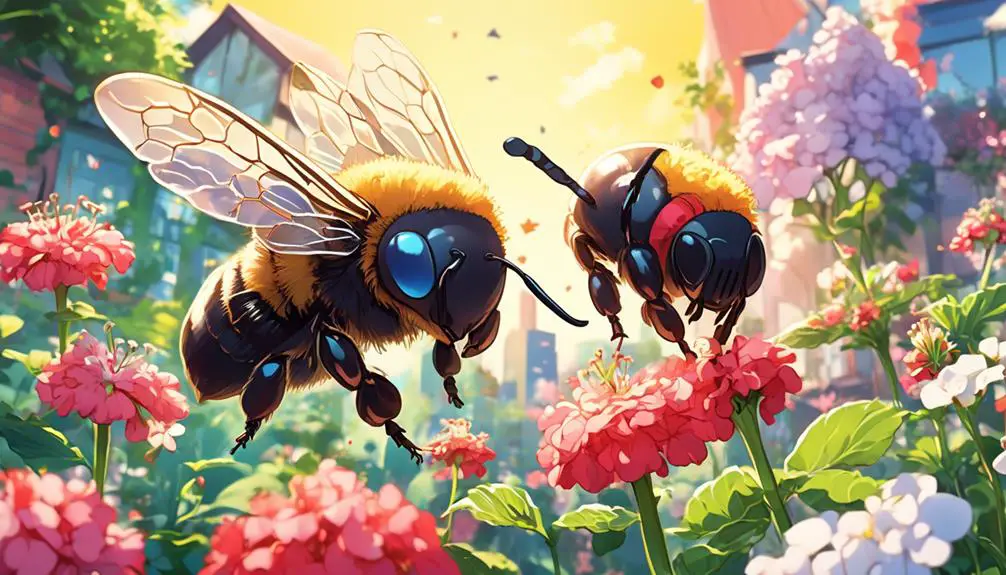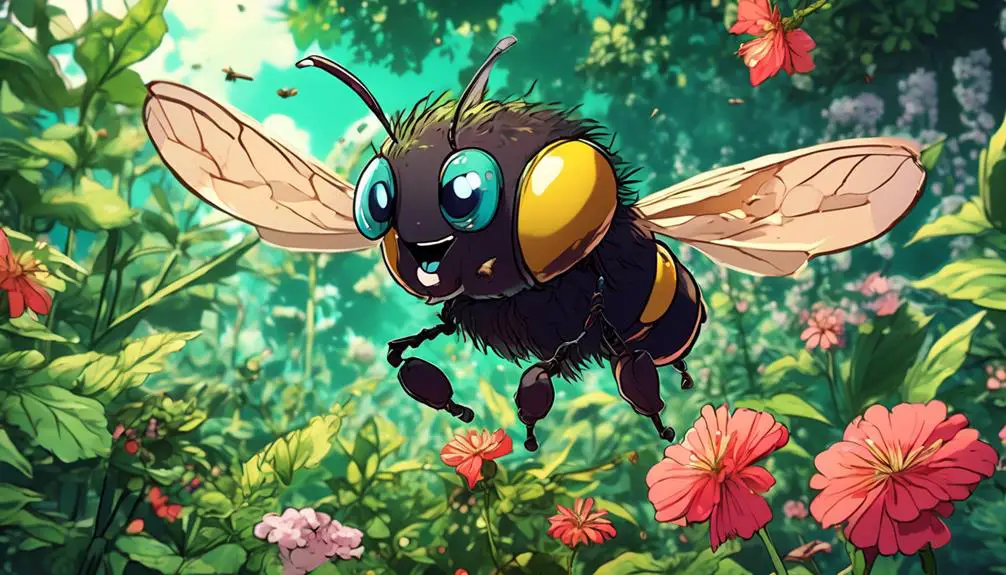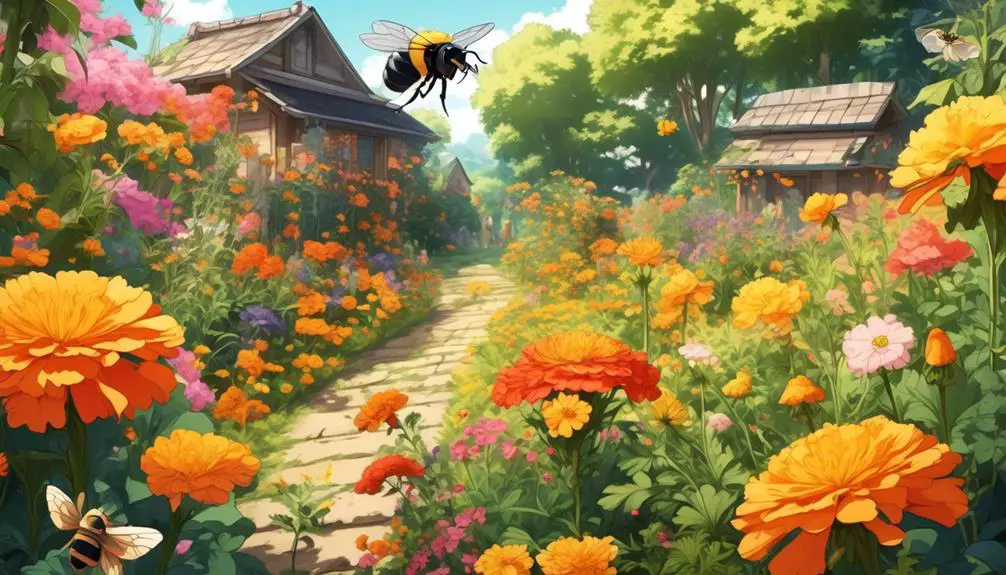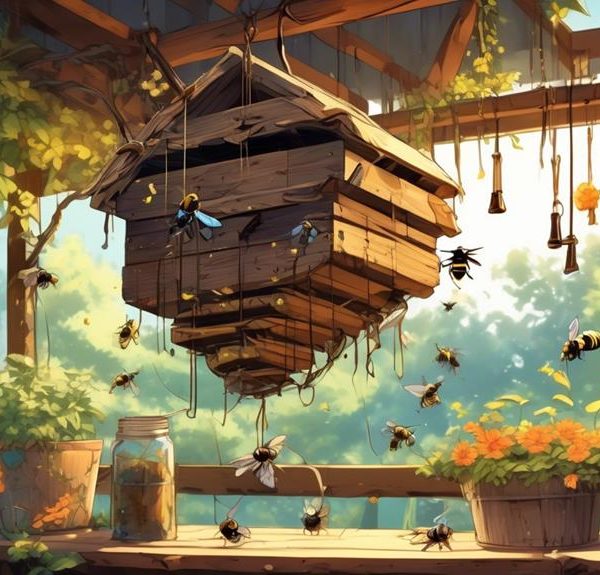Intrigue your garden with plants carpenter bees detest; discover which ones they are and how to use them to protect your wooden structures.

What Plants Do Carpenter Bees Hate
Did you know that nearly 90% of the world's plants rely on pollinators such as bees to reproduce? While you might appreciate the crucial role bees play in our ecosystem, you probably don't want carpenter bees drilling holes in your wooden structures.
Carpenter bees, unlike their honeybee cousins, are notoriously selective about the plants they visit. So, you're likely wondering which plants these creatures detest to keep your garden and structures safe.
We'll explore this intriguing topic and provide you with practical tips for cultivating a carpenter bee-resistant garden.
Key Takeaways
- Carpenter bees prefer soft, untreated woods like redwood, cedar, pine, and fir for nesting.
- They are attracted to open-faced flowers with bright colors, especially blues and purples.
- Strong scents from plants like mint, lavender, and geraniums can deter carpenter bees.
- The top five plants that carpenter bees avoid are mint, basil, geraniums, marigold, and lemongrass.
Understanding Carpenter Bees' Preferences

To effectively deter carpenter bees from your garden, it's crucial to understand their specific plant preferences, as they're particularly selective about where they choose to nest and feed. Generally, these bees favor soft, untreated woods for nesting – particularly redwood, cedar, pine, and fir. You'll often find them in pergolas, decks, and wood siding.
Regarding feeding, carpenter bees are attracted to open-faced flowers, where they can easily access nectar. They're particularly drawn to plants with bright colors, especially blues and purples. Some of their favorites include geraniums, azaleas, and flowering fruit trees.
Understanding this, you can selectively cultivate plants in your garden to discourage their presence. Opt for wood-treated structures and less attractive flowering plants. Interestingly, research suggests they avoid plants with strong scents and herbs, like marigolds, mint, or basil.
The Role of Scents in Deterring Bees

While you might enjoy the aromatic allure of certain plants, it's interesting to note that strong scents play a significant role in deterring carpenter bees. Studies reveal that these bees have a keen sense of smell, and certain scents, particularly strong and pungent ones, can repel them effectively.
Scientifically, bees' antennae function as sensory organs, capable of detecting the volatile compounds that plants release. When you introduce plants with robust fragrances, like mint, lavender, or geraniums, in your garden, you're essentially creating a scent barrier that can be off-putting to carpenter bees.
Research also substantiates that essential oils derived from such plants can deter bees. Citrus, peppermint, and tea tree oils are especially effective. By diffusing these oils around your outdoor spaces, you can create a natural, non-toxic deterrent. It's crucial to remember, though, that these oils should be used sparingly. Overuse could risk harming beneficial insects and upsetting the ecological balance.
In brief, understanding the role of scents in repelling carpenter bees can be a key strategy in your approach to safeguarding your wooden structures and preserving the aesthetic appeal of your garden.
Top Five Plants Carpenter Bees Avoid

Building on the concept of using scent as a deterrent, let's consider the top five plants that carpenter bees typically avoid due to their strong, repelling fragrances.
1) Mint: This plant's strong aroma is highly disagreeable to carpenter bees. Planting mint in your garden creates an invisible barricade that bees are reluctant to cross.
2) Basil: Known for its aromatic leaves, basil is another plant that carpenter bees despise. It's not only a great culinary herb but also a powerful deterrent.
3) Geraniums: These flowers have a very sharp scent, which is off-putting to carpenter bees. They're also visually appealing and add a splash of color to your garden.
4) Marigold: Carpenter bees dislike the potent scent of marigolds. Bonus point, they're pretty easy to grow, so you won't have to be a gardening expert to use them.
5) Lemongrass: This plant, thanks to its high citronella content, is a natural bee repellent. It's effective not just against carpenter bees, but also against other types of pests.
Implementing Bee-Repelling Plants in Your Garden

Now that you're aware of the top plants that deter carpenter bees, it's important to strategize their placement in your garden for maximum effectiveness. You'd want to ensure that these plants are in areas where carpenter bees are most likely to frequent.
Here's a simple two-column table to guide you on where to plant these bee-repelling flora:
Plant | Ideal Location |
|---|---|
Geranium | Near wooden structures |
Mint | Around patios or decks |
Citronella | Close to entrances |
Marigold | Along walkways |
Basil | In window boxes or hanging baskets |
Geraniums are best placed near wooden structures, which are prime targets for carpenter bees. Mint, with its strong scent, is excellent around patios or decks. Citronella can be strategically located close to entrances to deter bees from coming inside. Marigolds, with their potent odor, can line walkways. Lastly, basil can be placed in window boxes or hanging baskets, adding to your garden's aesthetics while keeping the bees at bay.
Maintaining a Carpenter Bee-Free Landscape

After implementing these bee-repelling plants strategically in your garden, it's essential to take further steps to maintain a landscape that's free from carpenter bees. You must focus on regular inspection and preventive maintenance. Since these bees are attracted to untreated, weathered wood, it's wise to paint or varnish outdoor wooden structures.
Research has proven that carpenter bees don't like the smell of certain essential oils like citrus, tea tree, and peppermint. So, consider applying these oils on your wooden surfaces to discourage bee infestation. Also, you can use a homemade bee repellent spray made from vinegar and citrus peels.
Another practical approach is to seal all cracks and crevices in your wooden structures. Carpenter bees prefer drilling into wood with existing holes or cracks. Regularly inspect and seal these potential entry points to deter the bees.
Furthermore, installing a bee box in your garden can lure the bees away from your home. The box, filled with bamboo tubes or drilled blocks of wood, serves as an attractive alternative nesting site for the bees.
Conclusion
In essence, understanding carpenter bees' aversions to certain plants can help maintain a bee-free landscape.
Plants like marigold, geranium, mint, and basil can be effective deterrents. Incorporating these plants into your garden can significantly reduce carpenter bee activity.
However, don't forget to regularly maintain these plants for continuous effectiveness. Make your garden a no-fly zone for carpenter bees by using nature's own deterrents.


